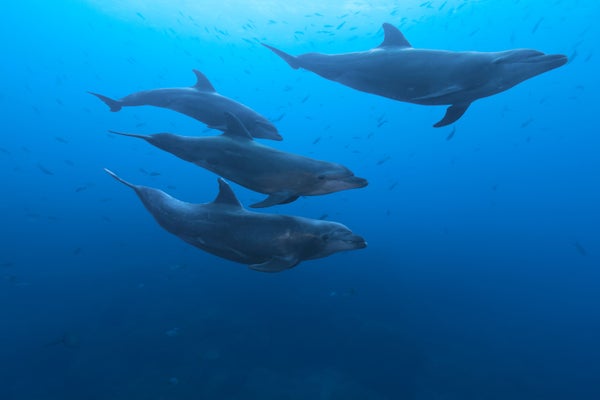New research is fundamentally revolutionizing our understanding of how dolphins perceive their complex underwater world, suggesting that their remarkable echolocation ability functions more like a sense of ‘touch’ rather than traditional ‘seeing’ with sound. Historically, the intricate mechanism of dolphin echolocation has been widely compared to a form of auditory vision, where returning sound waves were believed to create a detailed acoustic picture of their environment, allowing them to ‘see’ objects through sound alone.
However, groundbreaking studies now propose a profound reinterpretation: dolphins may interpret these sophisticated sonar signals in a fundamentally different manner, akin to how humans feel vibrations or textures. This isn’t merely a subtle distinction; it suggests that dolphins aren’t just passively detecting objects from a distance but are, in essence, actively ‘feeling’ the physical characteristics, composition, and even the internal structure of their surroundings through the intricate feedback generated by their narrow, sweeping sonar beams. This paradigm shift challenges previous analogies and opens entirely new avenues for exploring the nuanced sensory experiences of these highly intelligent marine mammals.
The traditional view positioned echolocation as an external perception, much like our visual sense. The revised understanding, however, points towards an internal, tactile engagement. Imagine extending your hand in the dark to feel the contours and texture of an object; this new theory suggests dolphins are doing something remarkably similar with sound. Their focused sonar clicks, when reflected, provide a wealth of information about an object’s density, shape, and surface, allowing them to discern details in a way that transcends simple detection and borders on a form of acoustic palpation.
Researchers are now delving deeply into the neurological mechanisms that allow dolphins to process these complex acoustic cues not merely as auditory data, but as a tactile sensation. This involves exploring the unique neural pathways and brain regions activated during echolocation, seeking to uncover how sound translates into a ‘feeling’ of the environment. Such investigations promise to reveal deeper insights into the evolution of complex sensory systems across the animal kingdom and further illuminate the extraordinary cognitive capabilities inherent in these creatures of the deep.
This remarkable discovery holds immense implications for the field of Marine Biology, pushing the boundaries of our knowledge about animal senses and perception. A more accurate understanding of how dolphins interact with and navigate their complex oceanic habitats, particularly through their primary sensory mode of echolocation, is crucial. It promises to enhance conservation efforts by informing better strategies for protecting these vital species and their ecosystems, especially in environments impacted by human-generated noise.
In essence, this revolutionary research compels us to reconsider the very nature of perception beyond human-centric models. It highlights the incredible adaptability and specialization of animal senses, demonstrating that the underwater world, for a dolphin, is not just something to be seen with sound, but to be intimately felt and understood through a dynamic, acoustic touch. This new perspective paves the way for a richer appreciation of dolphin intelligence and their unique place in the marine world.
Discover more from The Time News
Subscribe to get the latest posts sent to your email.



